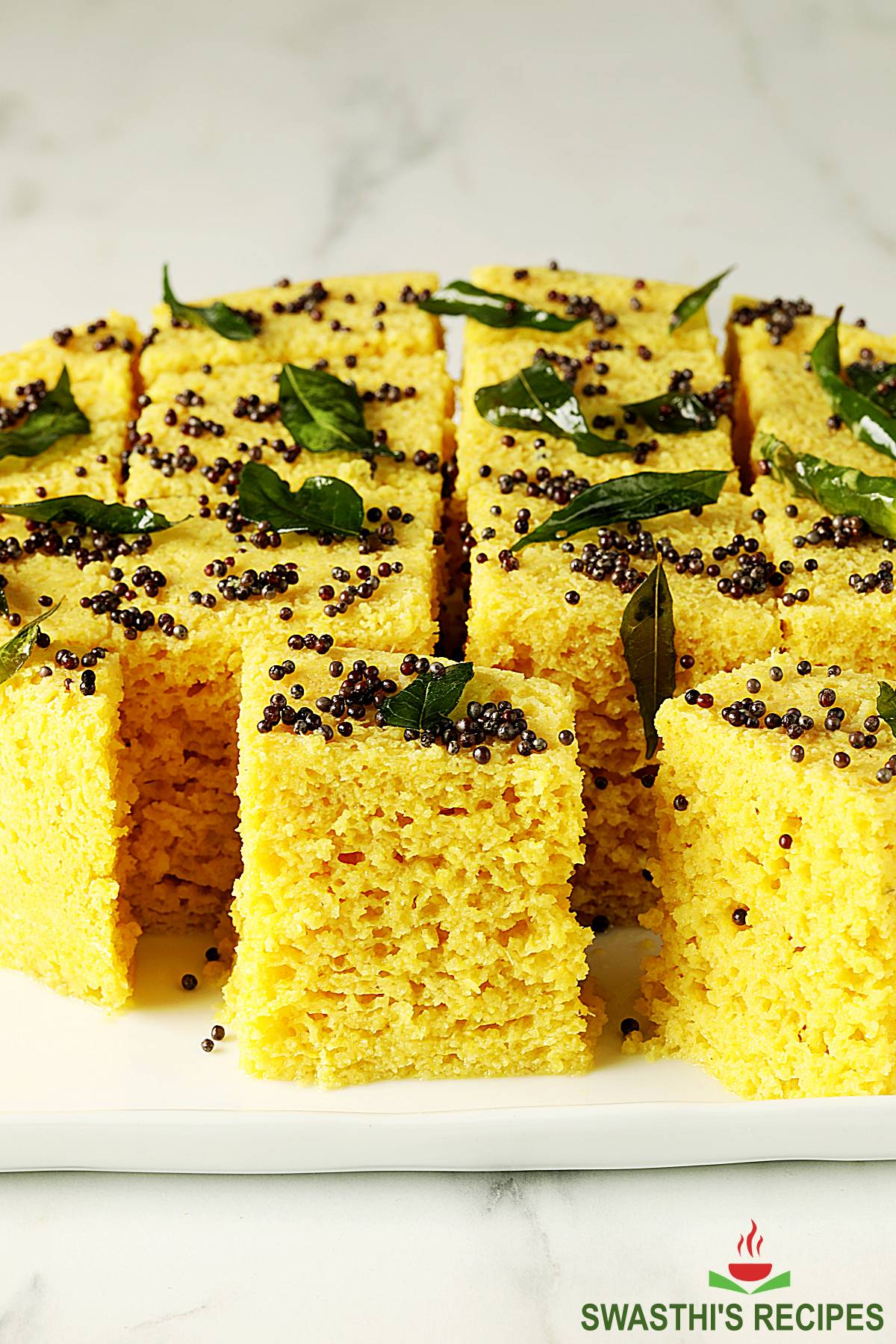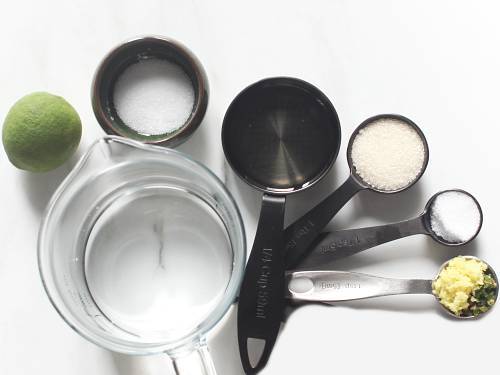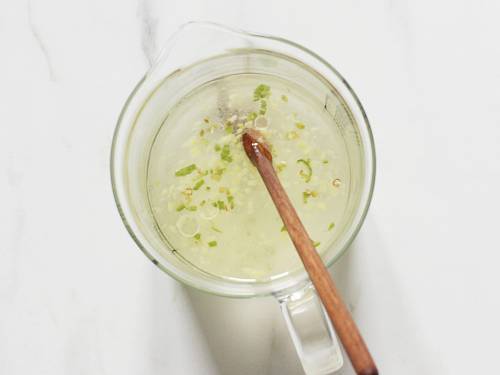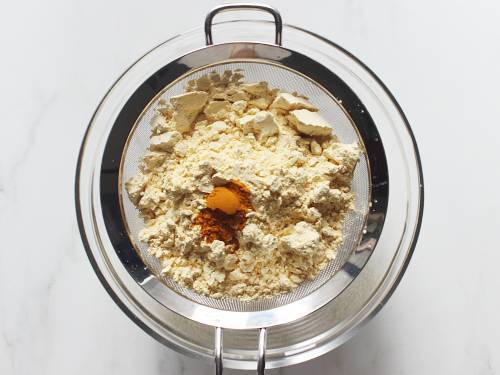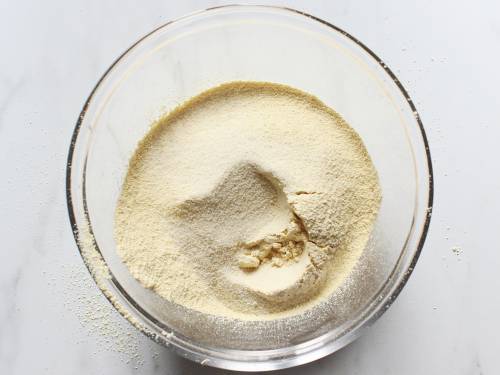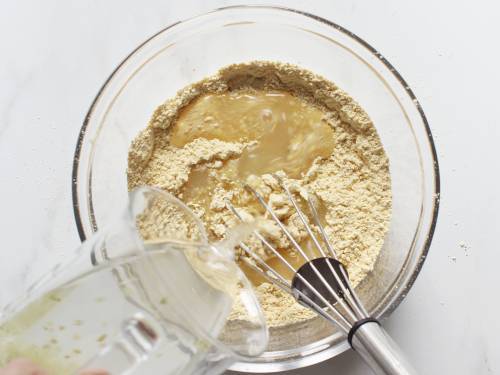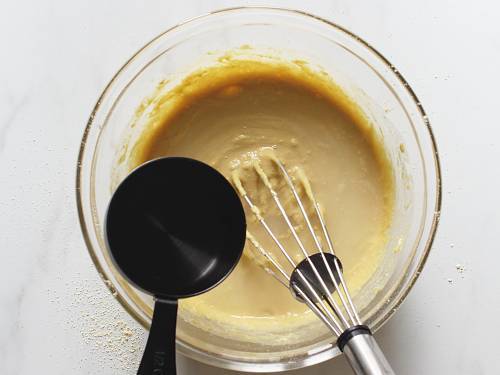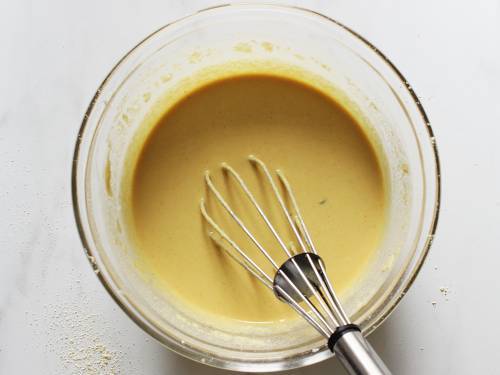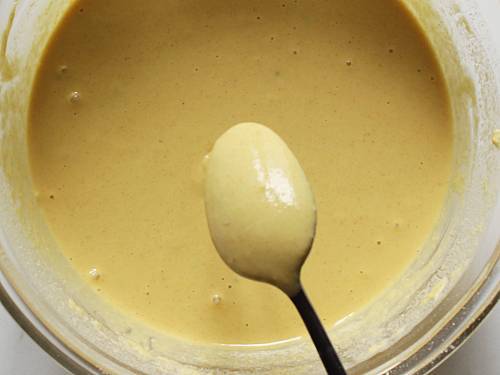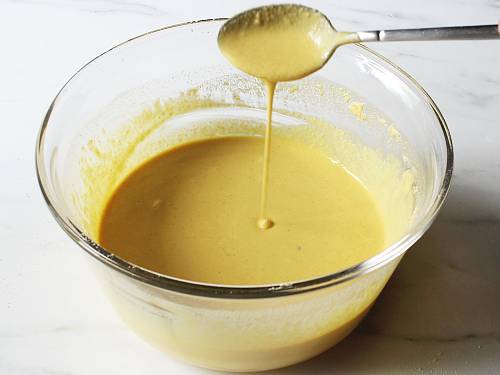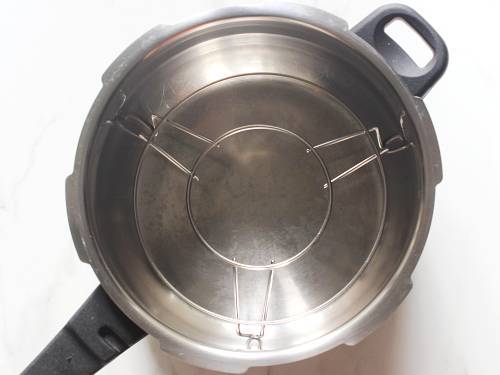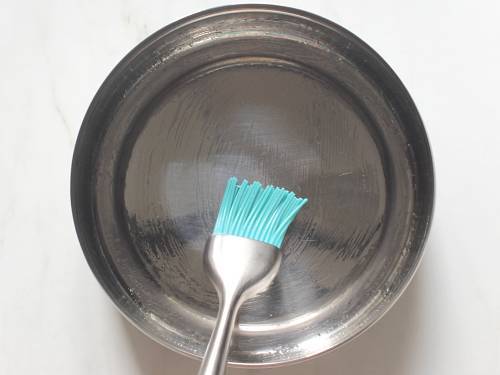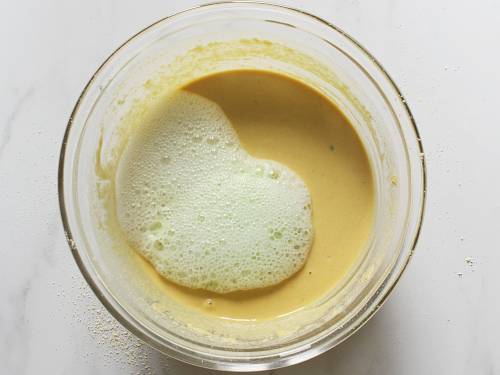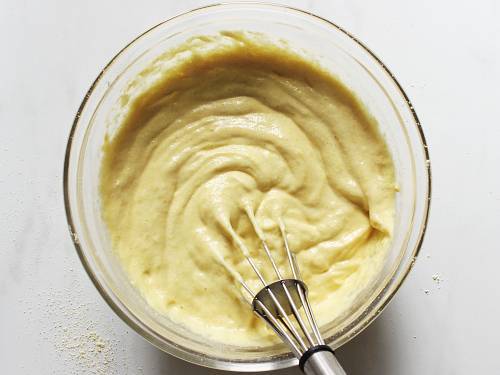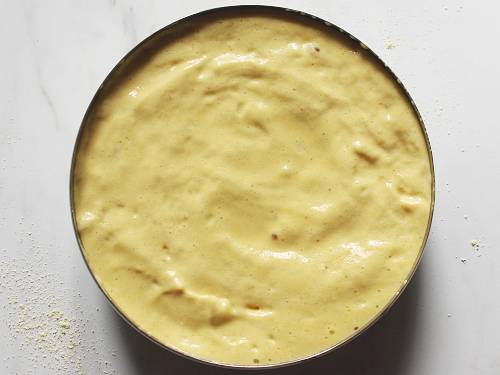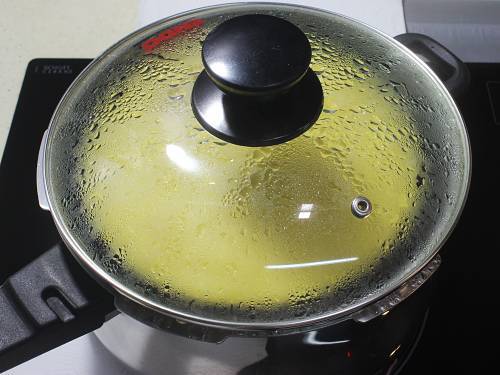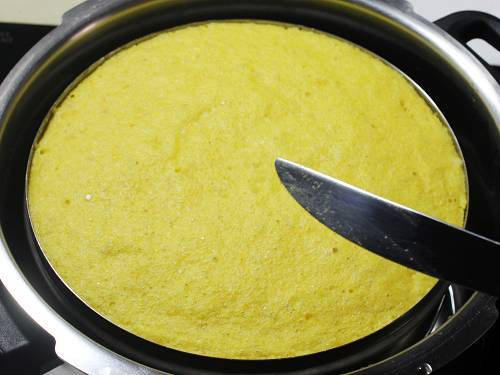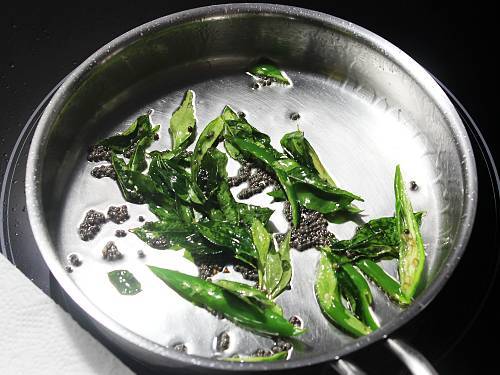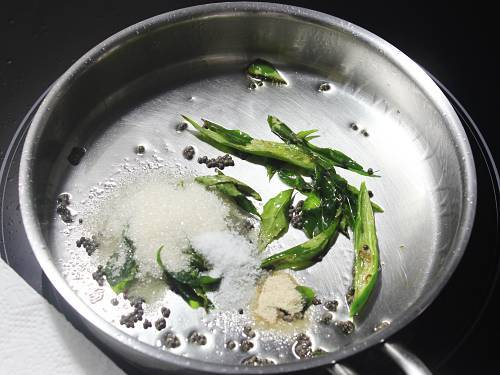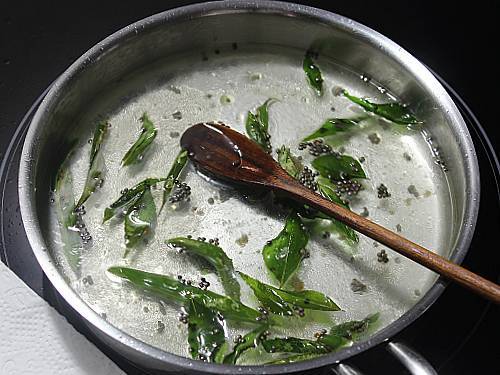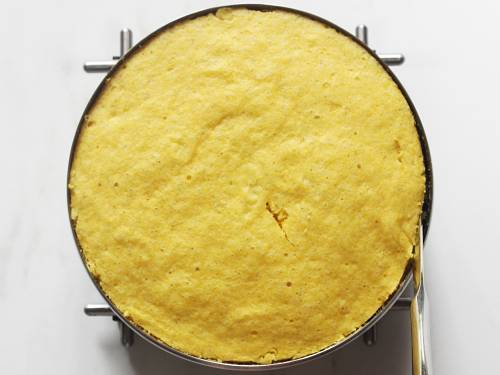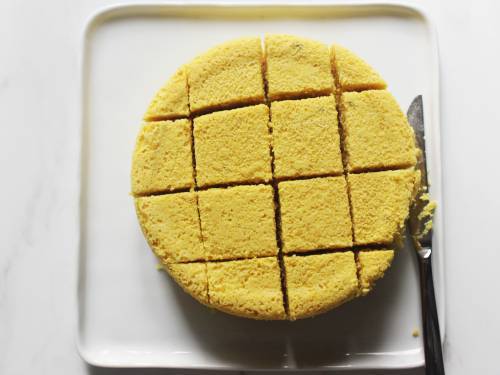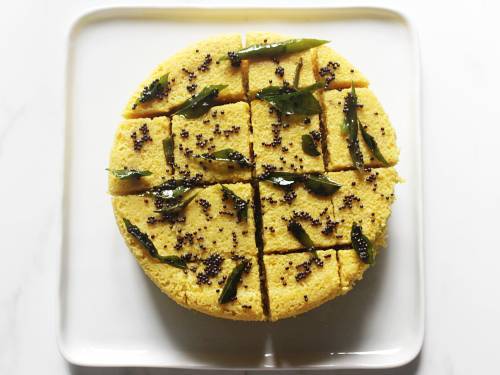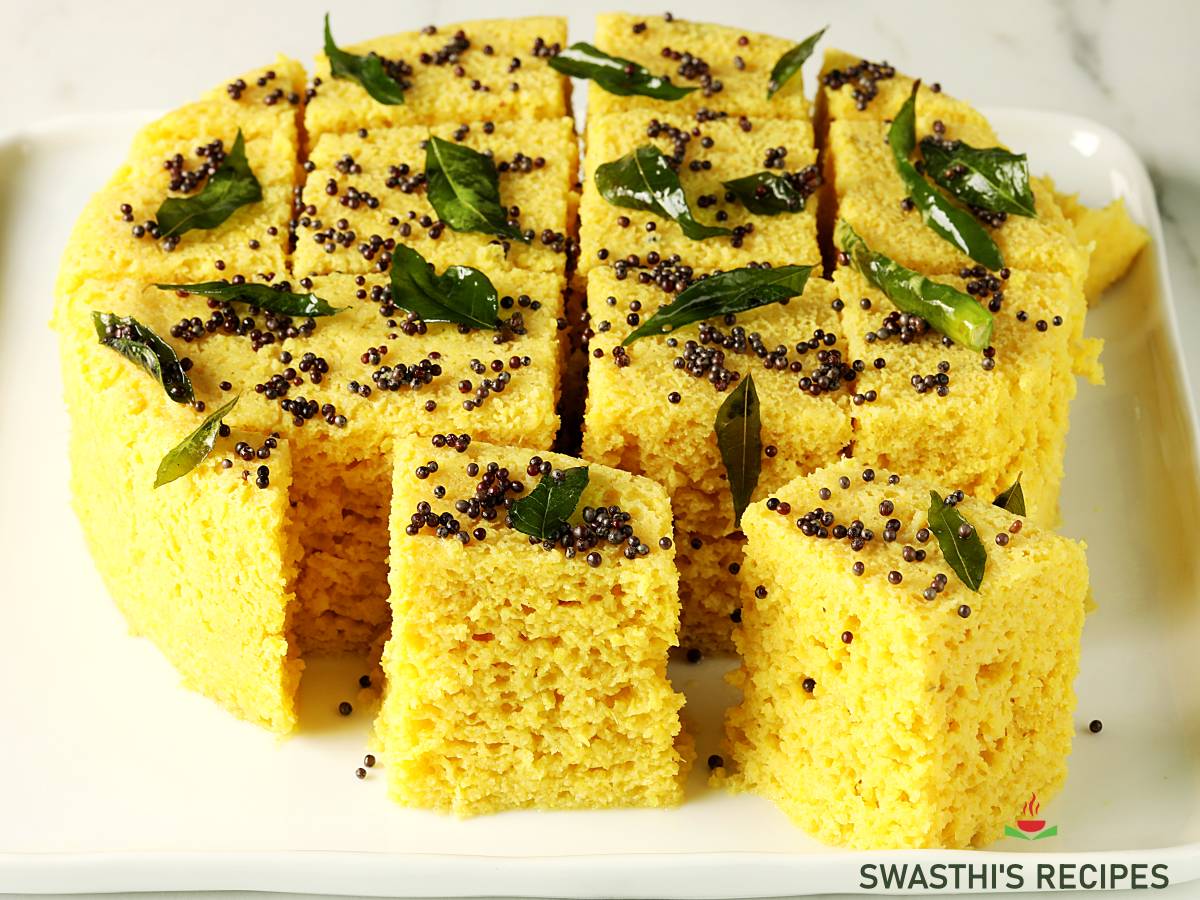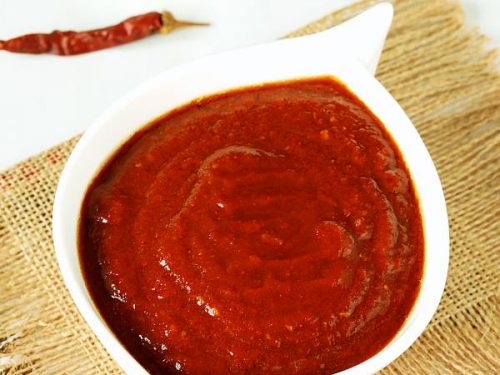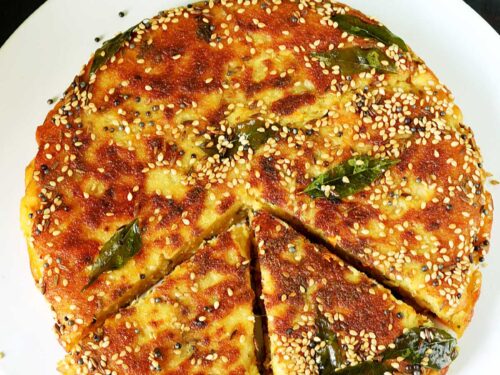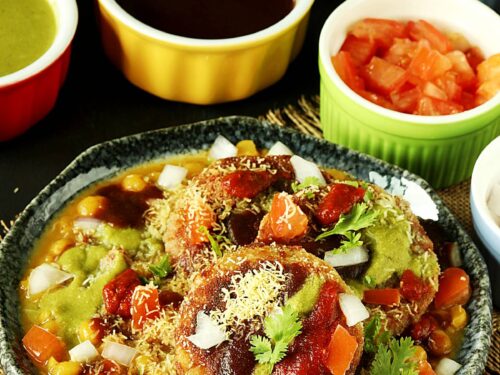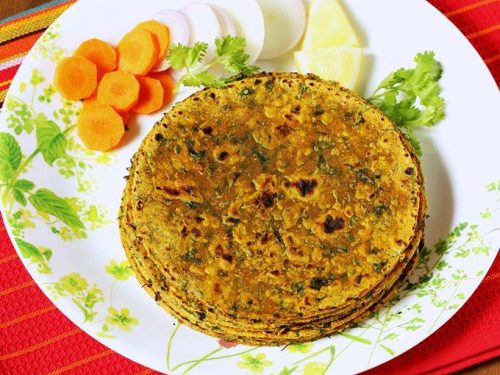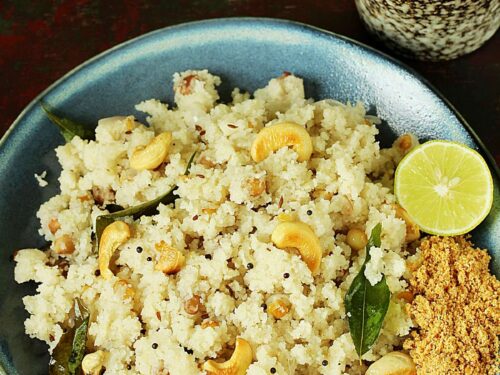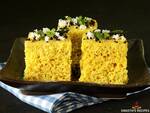Both are steam cooked & tempered. Due to the inclusion of rice, dhokla looks pale & lighter in color. But khaman is well-known as khaman dhokla across other regions & is popular on the restaurant menus. It is pretty much served in eateries, cafes & street stalls as a snack.
About Dhokla
Dhokla is a steamed savory cake made with fermented batter of lentils and rice. The batter is steamed to a cake in a mould. It is then topped with a tempering made of spices and curry leaves. Lastly dhokla is garnished with coconut, sesame seeds and coriander leaves.
What is Khaman?
Khaman also known as khaman dhokla is a savory cake made with a batter of gram flour and a leavening agent. The batter is steamed in a mould to get a fluffy and soft savory cake. It is topped with a flavorful tempering made with mustard, green chilies, sesame seeds, hing and curry leaves. Making the khaman dhokla consists of 3 parts – preparing the batter, steaming the batter and lastly tempering the steamed dish (khaman). This recipe is fairly easy and can also be made by beginners. A well-made khaman dhokla is soft & spongy without being dry or crumbly. It should be delicious and ideally not have an aftertaste of the leavening agent. Serve this as a breakfast or snack with a green chutney or red garlic chutney. But it tastes good on its own too.
Difference between Dhokla & Khaman dhokla?
Dhokla is made by soaking rice & lentils like chana dal. Then they are ground to a batter and fermented overnight to develop a flavour. It is then steamed in a tray or pan. The fermentation process helps the batter to rise while steaming. Later it is tempered with spices & curry leaves. Whereas khaman dhokla is an instant and quick version which does not require any soaking, grinding or fermenting the batter. This is instead made with gram flour which is nothing but ground chana dal (skinned split black chickpeas). A batter is made with flour and a leavening agent like fruit salt or baking soda which helps to leaven it. It is then steamed & tempered much the same way as done for the chana dal dhokla. So there is a huge difference between dhokla and khaman dhokla not in one aspect but many. The method of making and even the taste is different.If you are a beginners, then here is the list of what you need to make this khaman dhokla.
What you need
Apart from pantry staples like gram flour, salt, spices, curry leaves etc you also need 1 leavening agent to leaven the batter & another ingredient to activate the leavening agent. Fruit salt (ENO) or baking soda – Fruit salt does the leavening job, makes the batter fluffy and helps to rise the batter to a beautiful cake while steaming. Eno is the name of a well-known brand selling fruit salt in India. It is available in many other countries as well. If you are not accessible to eno, simply use baking soda which does the same job but won’t yield you a very fluffy cake. Lemon juice or citric acid – Usually to make khaman dhokla, citric acid is used in combination with baking soda. Citric acid activates the baking soda and creates air bubbles which help the batter to rise well while steaming. Lemon juice is a good substitute to citric acid and works the same way. However I have got the best results with citric acid and Eno. You can always go with baking soda and lemon juice but for extra ordinary results I have found that citric acid and baking soda gives the best. You can read more on choosing in the tips section below More Snacks RecipesHandvo RecipeRagda pattiesPotato wedgesAloo bhujia
How to Make Khaman Dhokla (Stepwise Photos)
Preparation
- To a mixing bowl or a jug, pour ½ cup water. Add ½ tablespoon ginger paste, green chilli paste (from 1 No), ⅓ teaspoon salt, 1 teaspoon sugar, 1 tablespoon oil and 1 tablespoon lemon juice or ⅓ teaspoon citric acid. In restaurants, citric acid is used in place of lemon juice. If using citric acid, look for natural pure citric acid. Refer my notes below.
- Add all the ingredients to the water and stir well until the sugar dissolves. Keep this aside.
- Place a sieve over a large mixing bowl. Add 1 cup besan (125 grams) and ¼ teaspoon turmeric to it.
- Sieve them and then add 1 tablespoon fine semolina (suji). Mix everything well.
Make Batter
- Pour the spiced water we made at step 2 and mix well to a lump-free batter. At the end of this step you will have a thick batter.
- Add more water as needed to make a free flowing yet slightly thick batter. The quantity of water to use depends on the texture of flour. You may need a little more or less than what I have used. You will need about 4 to 5 tbsps water at this stage.
- Beat the batter very well in one direction (clock-wise or anti-clock wise) with your whisk for exactly 50 to 60 seconds.
- Dip a spoon and check the consistency. It should not be too runny or too thick. But has to coat the back of the spoon well and should not be very thick.
- This is the consistency of the batter. It should not be of a ribbon consistency. Keep this aside and prepare the steamer.
- Pour 2½ to 3½ cups water to a large pot or a steamer. Place a steel rack or a ring or a long legged trivet. Cover and bring the water to a rolling boil. Ensure there is enough water in your steamer so it can steam constantly for 20 mins. (I pour about 4 cups as I use a large pot)
Steaming Dhokla
- Meanwhile add half to 1 teaspoon oil and grease a 5 inch box or a cake pan. I used a steel box. Grease the sides as well. If you do not have a pan, you can also use your masala dabba cups.
- When you see the water in the steamer is about to come to a boil, then add ¾ teaspoon eno (fruit salt) and pour 1 tablespoon water to the dhokla batter. You will see the eno activates and froths up.
- Quickly mix everything well to incorporate it with the batter. As you mix, the khaman dhokla batter begins to thicken and turns light. Run the whisk around the bowl including the sides to mix it evenly. If you don’t mix the batter evenly all over, dhokla will be dense in some parts.
- Immediately pour this to the box or pan. It is very common to see uneven surface on top. Optionally using your whisk slightly smoothen the top quickly.
- Note after adding eno, the batter has to go straight into the steamer that’s ready with boiling water. Place it in the steamer and cover it. Your lid should have a vent for the steam to escape otherwise some amount of moisture may come on top of the dhokla. You can also use your pressure cooker lid without the whistle.
- Steam it for 20 mins on a moderately high flame. It has to be steamed constantly for 20 mins. After 5 mins or so I reduce the heat a bit as the water comes out from the sides. This again depends on your stove and steamer. Once done, a knife inserted in the center should come out clean. Turn off the stove and leave it covered in the pot for another 5 mins.
Tempering Dhokla
- Pour 1 tablespoon oil to a tadka pan and heat it. Add ¾ teaspoon mustard seeds. When they begin to crackle, add 1 sprig curry leaves and 2 sliced green chilies. Saute for a while until the curry leaves turn crisp.
- You can add 1 tablespoon sesame seeds at this stage if you like. But I do not add them here as we prefer to sprinkle the toasted sesame while serving. Turn the flame low and add the sesame seeds. Saute until they crackle. Lastly add ⅛ teaspoon hing, 1 to 2 tablespoons sugar and ¼ teaspoon salt. Mix the hing with oil.
- Next ½ to ¾ cup pour water. Bring it to a rolling boil and turn off. Stir a few times to dissolve the sugar. Cover this and leave it to cool down a bit.
- Remove the dhokla pan from the steamer and cool it completely. After it cools down, using a knife loosen the sides if needed. If your tin has even sides, then the dhokla will loosen on it’s own. Since mine has a design/dent on the sides, I had to run a knife.
- Keep a plate over the pan and invert the dhokla to the plate. Ensure the dhokla has cooled completely before removing it. Cut to squares. Since I doubled the recipe (2x) I got so many pieces.
- I prefer to pour the warm tempering on the dhokla. Spread the spices all over. First pour half cup of the tempering water and wait for a while. Then pour the rest. All of the water will be absorbed by the dhokla. Cool completely. Garnish just before serving. Sprinkle toasted sesame seeds along with fresh coconut & fine chopped coriander leaves. Serve dhokla with Coriander Chutney or Red Garlic Chutney.
Storing & Reheating
To refrigerate, keep the cooled dhokla (without coconut) in a air tight box and use up within 2 days. To reheat, steam again in a steamer or a cooker until very hot. Or Place the bowl uncovered in the Instant pot and pressure cook for 0 mins. Steaming dhokla after refrigerating will make it super soft and spongy. If you feel it has become dry, you may make a fresh tempering with little water and pour just before serving.
Pro Tips
Consistency of batter is the key to make a spongy dhokla. If there is not enough water in the batter, dhokla will turn out dense and crumbly. Ideally it should not be too thick and not too thin/ runny. It has to be thick enough to coat the back of a spoon and thin enough that it doesn’t have a ribbon consistency. So you can add as much or less water as needed until you get this right consistency. Use a tablespoon to pour additional water so you don’t add a lot. Amount of water to add depends on the texture of the besan. I have always made this with fine besan and the amount of water mentioned in the recipe card works well for me. Depending on the texture you may need more or less. Steaming: Batter has to be steamed for a good 20 mins. Ensure there is enough water in your steamer/ pot to steam constantly for 20 mins. If the water in your pot gets over, then pour hot water from the sides to your pot. Pouring cold water will cool down your steamer instantly and will stop steaming your dhokla halfway. In this case, leavening agent won’t work as efficiently as it should & makes the dhokla partially dense.
Citric Acid vs Lemon Juice
I have tried the recipe with both these. Citric acid makes the dhokla airy and light. Lemon juice also yields good results but not as airy and light. Choosing citric acid for khaman dhokla There are different kinds of citric acid available in the market. Look for words like pure, natural, food grade/ food safe, NON-GMO citric acid. Some are even labelled as gluten-free, vegan/vegetarian. Even a basic food grade citric acid works well for this recipe.
Eno (Fruit Salt) vs Baking Soda
Eno is a fruit salt which is a combination of citric acid, sodium bicarbonate (baking soda) and additives. It is the same as using citric acid and sodium bicarbonate minus the additives. Choosing Eno Eno is available I many different flavors. Please use the basic unflavoured Eno which comes with a blue wrap. Using flavoured eno affects the flavour of khaman dhokla. Check the expiry date and ensure it is active. Restaurants use baking soda in combination with citric acid to avoid an aftertaste. Eno with citric acid / lemon juice works the best for me. So I have shared the same here.
Faqs
How to avoid orange/ red spots in your dhokla? Baking soda reacts with turmeric and can cause orange to red spots in your dhokla. There are 2 key points to note if you do not want orange or red spots in your dhokla. Firstly after making the batter, whisk it very well for 50 to 60 seconds in one direction. This incorporates the turmeric well with the other ingredients in the batter. Since there is no more concentrated turmeric particles in the batter, you won’t see the red patches in your dhokla. Secondly, activate the eno with a tablespoon of water when you add it to the batter. Water not only helps to activate it instantly but also ensures all of the powder is dissolved well which can otherwise easily impart those red and orange patches if it comes in contact with any undissolved turmeric. Related Recipes
Recipe Card
